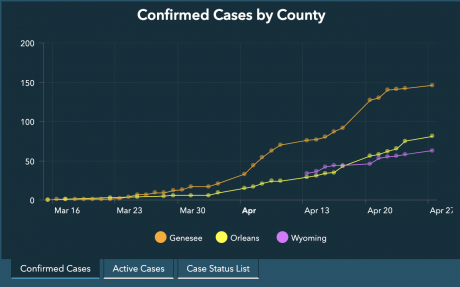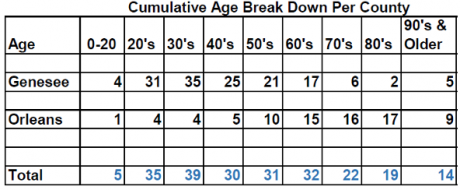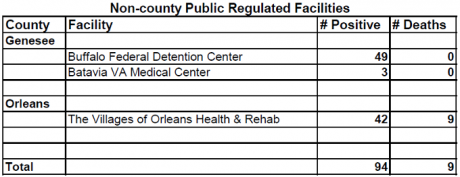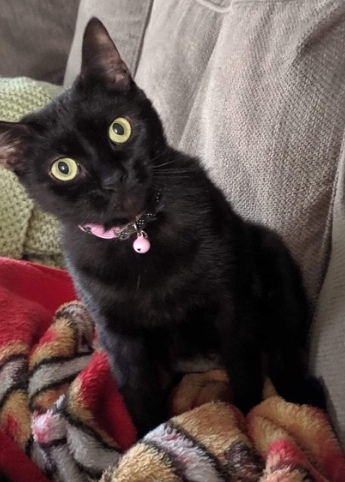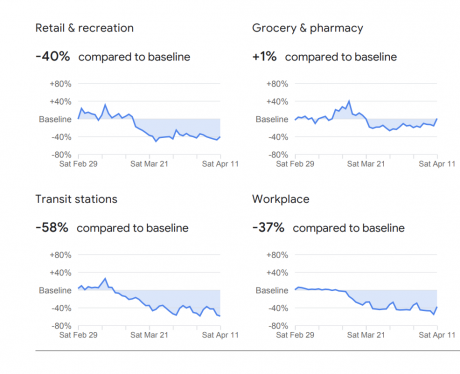Update: April 28, 12:30 p.m.
City Manager Martin Moore specified that the $40,000 sales tax loss referred to in the story is for the full fiscal year and only related to reductions caused by sales tax revenues directed to NYS hospital payments.
-------------------
Without getting into specifics, City Manager Martin Moore tonight said he and departmental leaders are crafting a multilevel plan that “protects core services” and, hopefully, jobs while bracing for what could be jarring hits to the municipality’s bottom line in the coming weeks.
Speaking at Batavia City Council’s Zoom Videoconference Meeting, Moore said lessons he learned from previous economic slumps are guiding his approach to managing City income and expenses in this time of uncertainty fueled by the COVID-19 Pandemic.
“(This is) based on personal experience in dealing with oil boom and bust cycles, but it applies somewhat here,” Moore said. “That is to have the ideas and the things in place, so that when we see we’re going to hit certain revenue reductions, we’re not scrambling around figuring out what we’re going to do. We’re going to have it already laid out.”
Moore compared the current situation in Batavia (as well as Genesee County and its towns and villages) to “the last time that I went through a three-year time period at a previous location, where revenues went way down,” he said.
“We set up a four-stage at that particular incident, and we ended up in stage three of four,” he recalled. “That taught an important lesson that when you get a deep cycle type of downturn like we’re dealing with here … not just planning for what we have now but planning for what we could be looking at (if it goes to) B, C, D or E. We’re protecting our core services by doing it this way -- our core business services and our core services to the public.”
Moore said the “good news” is the City has received about $1.5 million in state Aids and Incentives to Municipalities funding thus far, with another $250,000 due in September. The bad news is that sales tax revenue is estimated to be down by about $40,000 “that was over and above the AIM aid reduction on the sales and use tax that goes to towns and villages.”
He also said the City’s immediate cash flow is in “pretty good shape,” payroll is being met and bills are being paid.
“With that said, we are still being cautious with our future purchases,” he said. “If something is going to happen, it needs to be paid for with grants; it needs to be paid for with donations. … We’re looking for cost savings.”
He also said there are no plans at this time to furlough or lay off employees.
“One question that has been asked quite often, is the City going to be furloughing or laying off any employees right now? Is there an announcement tonight? The answer is no,” he said. “We are taking a look at the part-time employees’ side. When do we need to start capping that? When would we need to start having conversations with union bodies if we got below a certain level of reduction (20-30 percent range)?”
Moore said he will be meeting (by videoconferencing) with department heads on Wednesday to discuss strategies at various levels of reduced revenue.
“If it looks like we’re going to hit a 15 percent revenue target reduction, we’ve got certain things we need to do. If we’ve got 30 percent reduction in revenue, there’s certain things we need to do,” he said, noting that he pledges complete transparency to Council and the public. He also said that planning for different scenarios now will help the City develop its budget for 2021-22.
Moore warned that all state aid is subject to being recalled by Gov. Andrew Cuomo, with the first of several decision-making dates set for the end of this month.
“So, we’re watching this week to see where the hammer, so to speak, is going to drop as far as holding back on aid to municipalities,” he said.
Council President Eugene Jankowski said he’s keeping his fingers crossed that the picture isn’t as bleak as some are predicting.
“I’m hoping their estimates are overzealous and that we’re going to be closer to even line than we are going to be in debt,” he said.
Richmond, Harvester road work projects move forward
In other action, as reported in a preview story on Saturday on The Batavian, Council discussed two resolutions pertaining to the rehabilitation of Richmond and Harvester avenues, scheduled for the summer of 2022 – an agreement with the State Department of Transportation to pay $358,900 for preliminary engineering, design and right-of-way incidentals and the procedure to select an engineering firm.
Following the brief discussion, the resolutions were forwarded to the May 11 Business Meeting for a formal vote.
Public Works Director Matt Worth said this is the “first step” in a $2 million, multifaceted process to fix the entire length of Harvester, and Richmond from State Street to Oak Street.
Richmond is the street “we get the most comments on as far as condition issues,” Worth said.
With the application of federal and state funding, the expense to the City would be slightly more than $102,000 – or about 5 percent of the total cost.
Worth said the City can not move the date of construction forward since funding is controlled by the federal government, but did mention, in response to a question from Council Member Robert Bialkowski, that City crews are ready to patch and repair “to hold the street together” until then.
“We have been waiting for the hot mix asphalt plants to open up, which they have, and we’ve been looking forward to days when it doesn’t rain all day,” Worth said. “Richmond Avenue will receive a more intensive patching or crack repair, if you will.”
Worth, in conjunction with the Moore, said he reduced the 50 percent (of the workforce) requirement and we are looking to reallocate the highway crew, and whether we bring that up or move that around to make it more efficient, that’s something we’re looking at right now.”
Jankowski said the state is giving municipalities “leeway” when it comes to getting highway and construction crews back to work.
As far as the project engineer is concerned, Worth did not disclose the name of firm that has been selected but did say that 10 companies responded and the pick will be shared with City Council prior to the next meeting.
Moore noted that the 10 who submitted bids were “high-quality firms hungry for the work.”
In other developments:
-- Council members agreed to table an application from Genesee Country Farmers Market to run the market this year on the parking lot at Alva Place and Bank Street after Bialkowski asked why documents submitted listed an Oakfield address and Schwab Farms of Gasport.
Beth Kemp, director of the Batavia Downtown Business Improvement District, said the BID supports the GCFM, which she said is “its own entity (operating) in collaboration with the BID.”
Kemp serves as secretary on the GCFM board and filled out the application for the farmers market, which is set to run on Tuesdays, Thursdays and Fridays from June 5 through Oct. 30.
The BID receives no revenue from the endeavor, Kemp said, adding that proceeds from vendor fees go to GCFM to cover the cost of running the market. She also said the GCFM recently hired a new market manager.
Jankowski picked it up from there, stating that the farmers market is using City property and that he “thought it (proceeds) were going to the BID.” He also asked if the GCFM was making a profit.
The discussion was put on hold until the May 11 meeting, with expectations of ironing out any issues prior to opening day.
-- Bialkowski also had questions about insurance coverage for the “Beertavia” event, a craft beer festival promoted by the BID that is scheduled for 2-6 p.m. on Aug. 8 at the same location.
“I’m not for it or against it, I just have concerns about liability,” he said, adding that the only way to full indemnify the City was to have all vendors submit a certificate of insurance listing the City of Batavia as an additional insured and showing dram shop coverage in order to serve alcohol.
Kemp said the BID applies for a one-day permit and holds its own liability insurance plus pays for an additional endorsement, plus each vender supplies a certificate of insurance listing the BID and the City of Batavia as additional insured.
She also said all of the brewers provide dram shop documentation.
“We have turned away vendors in the past” (that have not had proper insurance), she said. “We also put up perimeter fencing and provide additional security to check IDs.”


